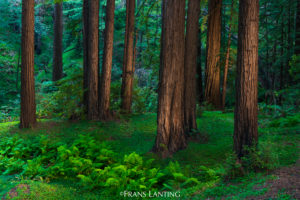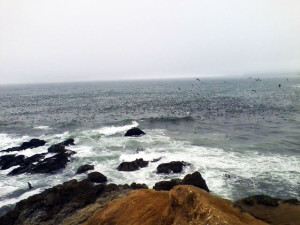In 2009, the Monterey Bay National Marine Sanctuary expanded its territory to include the Davidson Seamount, a 7,480-foot summit (nearly twice as high as Mount Diablo) that is over 4,100 feet below the surface. This 26-mile-long and 8-mile-wide cluster of submarine volcanoes 80 miles southwest of Monterey is one of the most studied seamounts in the world. After nearly a decade of research, scientists have identified 168 species of animals, including sea stars, sea cucumbers, sea lilies, and urchins, and 27 types of deep-sea corals such as gorgonian (sea fans) and black corals (named for their dark skeletons, not their colorful living tissue). Now this biologically rich area will enjoy the same level of resource protection as the rest of the sanctuary.
Davidson Seamount is not our only local mountain under the sea. Nearly 50 miles beyond the Farallon Islands are three other seamounts–Guide, Pioneer, and Gumdrop–that share characteristics with Davidson, although they are not as large or deep. Senior Scientist David Clague of the Monterey Bay Aquarium Research Institute (MBARI) explains that they, like Davidson, line up in a northeast-southwest direction and have a series of ridges separated by sediment-filled troughs. Seamounts become veritable oases in the deep ocean because the swirling currents they induce help to concentrate nutrients, and their rocky surfaces give coral and other invertebrates a hard substrate to cling to. That biomass, in turn, attracts all kinds of other marine creatures.
As has been widely reported, shallow-water coral reefs are suffering from the effects of temperature-induced coral bleaching caused by rising carbon dioxide levels, leading some scientists to predict that they may disappear completely by 2050. Deep-water corals are also susceptible to climate change and ocean acidification, says Lonny Lundsten of MBARI, but researchers don’t yet understand how or when they will be affected. Lundsten notes that several scientists are looking at longer-lived deepwater corals, such as bamboo corals, to determine how they have survived past climate variability.
Find out more about MBARI’s research on seamonts at mbari.org/volcanism/Seamounts.

.jpg)



